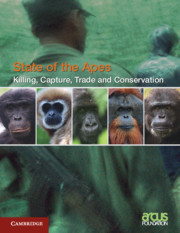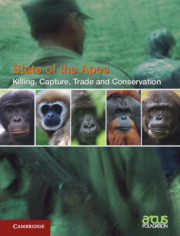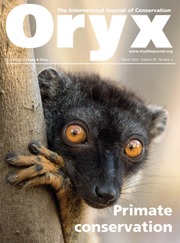Extractive Industries and Ape Conservation
Current dominant thinking and practice in the private and public sectors asserts that peoples' development needs are in conflict with, or mutually exclusive to, the need to conserve the biosphere on which we depend. Consequently, we are asked to either diminish development in the name of conservation or diminish conservation in the name of development. Efforts to identify complementary objectives, or mutually acceptable trade-offs and compromises indicate, however, that this does not always have to be the case. This first volume in the State of the Apes series draws attention to the evolving context within which great ape and gibbon habitats are increasingly interfacing with extractive industries. Intended for a broad range of policy makers, industry experts, decision makers, academics, researchers and NGOs, these publications aim to influence debate, practice and policy, seeking to reconcile ape conservation and welfare, and economic and social development, through objective and rigorous analysis.
- The first volume to be published in an important new series, using objective and rigorous analysis to present, for the first time, statistics and information on all non-human ape species
- Intended to enhance and influence debate, practice and policy for a broad range of policy makers, industry experts and decision makers, academics, researchers and NGOs
- Beautifully illustrated in full colour throughout
Reviews & endorsements
'… a very good overview … The authors are experts and the explanations and examples are up-to-date.' Gorilla Journal
'This book is about the consequences that extractive industry is having on the tropical forests of Africa and Asia and the remaining apes that live within them. It is about the local, regional, and national policies that govern the extractive industry and the steps towards mitigation that stakeholders can consider. It has no fairy tale ending; it proposes no silver bullet. Rather, it is an attempt to lay out the consequences of today's resource extraction practices on ape communities and more importantly, encourage a shift towards acceptance that this industry and the environment are inexplicably connected … an important contribution towards identifying both the challenges and potential solutions involved in ape habitat conservation, written by a foundation that is a world leader in safeguarding wild and captive apes … Anyone interested in being familiar with how best to resolve this broader, widespread conflict must read this book.' Alex K. Piel, Primate Eye
Product details
March 2014Paperback
9781107696211
377 pages
247 × 190 × 17 mm
0.84kg
2 b/w illus. 130 colour illus. 23 tables
Available
Table of Contents
- Foreword
- The Arcus Foundation
- Notes to readers
- Acknowledgments
- Introduction
- Part I:
- 1. From global to local: the megatrends at the interface of apes and industry and the case of trade, law, and finance
- 2. Land tenure: industry, ape conservation, and communities
- 3. Ecological impacts of extractive industries on ape populations
- 4. Avoiding the chainsaws: industrial timber extraction and apes
- 5. Mining/oil extraction and ape populations and habitats
- 6. Artisanal and small-scale mining and apes
- 7. The bigger picture: indirect impacts of extractive industries on apes and ape habitat
- 8. Case studies of national responses to the impacts of extractive industries on great apes
- Part II:
- 9. The status of apes across Africa and Asia
- 10. Status of captive apes across Africa and Asia: the impact of extractive industry
- Annexes
- Acronyms and abbreviations
- Glossary
- References
- Index.









